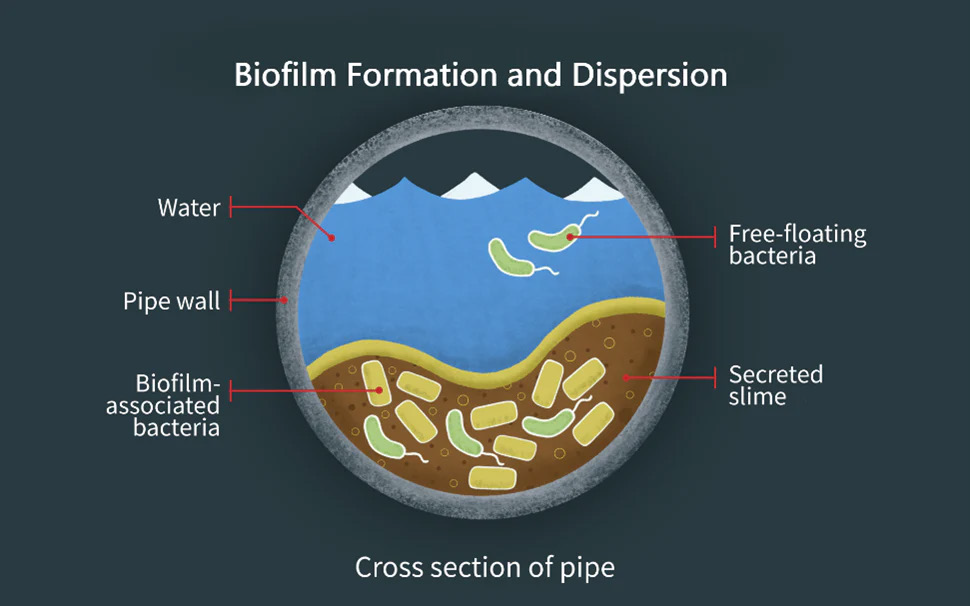Working towards a cleaner world.
Need innovative food, water and horticultural treatments?
BIOFILM CONTROL - WATER SANITATION

Biofilms are slimy layers of microorganisms that stick to wet surfaces. They may cause up to 80 percent of infections.
WHAT IS BIOFILM?
Biofilm is a complex network of microorganisms that attach themselves to surfaces for the purpose of reproduction and survival. Once attached, they form extracellular polymeric substances (EPS) which are very tough polysaccharides (slime Coating) that protect the bacteria from degradation.
When formed, they can be extremely difficult to remove due to the EPS, and are known to cause a wide range of problems.
Biofilm is commonly found on any solid surface that is exposed to a liquid, and can be typically found in irrigation systems, cooling and heating equipment, and food and beverage processing facilities.

WHY IS IT A PROBLEM?
Biofilm formation causes a number of significant problems. Firstly, the bacterial matrix can provide a home for far more dangerous pathogens such as Legionella, which may pose a risk to human health. Biofilms are also known to cause blockages in small tubing such as those commonly utilised for nursery drippers, which can result in dehydration and death of the plants.
Furthermore, the presence of biofilm increases energy costs and can cause corrosion in equipment, resulting in lost production and spoiled product.
WHAT CAN BE DONE ABOUT IT?
The only known effective treatment for biofilm removal is chlorine dioxide, which is a broad-spectrum biocide that is effective over a wide pH range. It is proven to eliminate biofilm in nursery irrigation lines, heat exchangers, cooling towers, and breweries. Chlorine dioxides exceptional effectiveness is a product of two properties; its physical state and mode of action.
It is a highly selective oxidant that is present as millions of micro gas bubbles, which allows it to penetrate into the biofilm slime and attack the bacteria attached to the surface, causing the complete removal and destruction of the whole structure.
To achieve optimal results, chlorine dioxide should be continuously applied at a very low dosage (0.2ppm) to ensure that the biofilm is not given a chance to reattach to the surface and proliferate.
Want a trial? Order a FREE sample*? T&C’s apply. *(Not available for Biochar and Vibrex)
